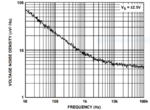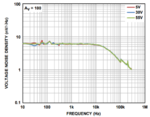Junus2012
Advanced Member level 5
Dear friends,
If I am zeroing the input offset voltage by any kind of technique, let say I make it zero as an ideal case.
I am thinking that input offset voltage is combination of multisource like CMRR, PSRR, and noise. So if I made the offset voltage zero this means I made the noise zero
right ?
By this way, the dynmaic techniques like chopper of auto-zero are reducing the offset voltage, and the noise consequently
Thank you in advance
If I am zeroing the input offset voltage by any kind of technique, let say I make it zero as an ideal case.
I am thinking that input offset voltage is combination of multisource like CMRR, PSRR, and noise. So if I made the offset voltage zero this means I made the noise zero
right ?
By this way, the dynmaic techniques like chopper of auto-zero are reducing the offset voltage, and the noise consequently
Thank you in advance

